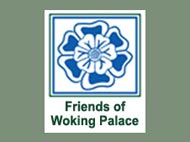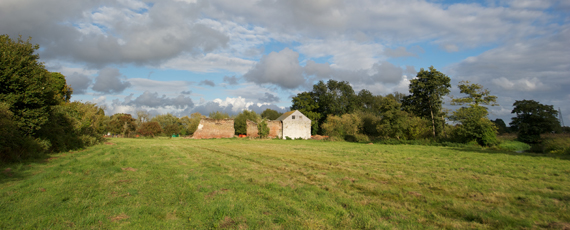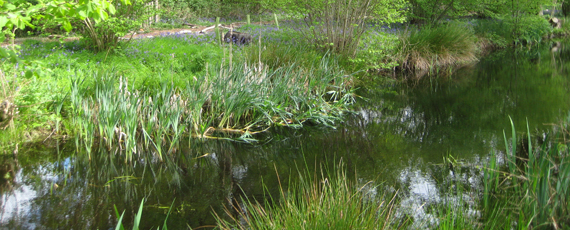The Palace Today
Woking Palace is situated on the alluvial flood plain of the original un-canalised course of the River Wey opposite Broadmead and about 1.5 km downstream from the parish church of St Peter’s, Old Woking, just south of the east end of Carters Lane. The site has been designated as a Scheduled Ancient Monument under Section 1 of the Ancient Monuments and Archaeological Areas Act 1979 as amended by the National Heritage Act 1983.
The moated site can be conveniently divided into four parts namely:
- north east quadrant
- barrel vault and associated structures in the south east
- the King’s Garden on the south west
- the Copse to the north west, once the orchard.
The scheduling of a monument means that permission is required for works affecting that monument. This necessitates an application to English Heritage for Scheduled Monument Consent. It follows, therefore, that no digging, planting or similar work may be carried out on the site without such Consent. No burning may be carried out within the Copse although burning is allowed outside the Copse provided that this is undertaken on metal and the resultant ash removed off the site.
There are three moat arms, one partly filled in, with the River Wey as the fourth element of the water features enclosing the site.
The few remaining structures on the site above ground are broadly in the south east quadrant and consist of a barrel vault and some adjoining Tudor brick walls. Woking Borough Council as custodians has found it necessary to erect a protective roof over the barrel vault, install a locked door and carry out protective repairs to the brick structure.
the stone built Barrel Vault, probably dating from the 14th century, and next to it, the remains of a later brick building (a Tudor tennis court?). The Barrel Vault may have been a store and would probably have been two storey, as was most of the Palace. The roof of the Barrel Vault has brick vaulting interspersed with chalk ribs and there is Tudor graffiti on the left hand side of the doorway. When the Palace was abandoned in the 1620s, the Park was turned over to agricultural use and the brick building was used as a barn until within living memory. Other fragments of wall foundations can be seen, which indicate where buildings such as The Great Hall, the gatehouse and the Queen’s Gallery would have been.
The vault is the one remaining part we have of the original Palace, albeit missing its second storey, and it is intended to present the building in as informative manner as possible. Although the building retains its original outside sarsen stone on the two sides, the front, and certainly the rear, appear to have been rebuilt since the building was originally erected. Archaeological investigation may help to explain this anomaly.
The vault now has electricity and the Friends try to present the building in the best possible light. Also at present we just have a plan of the vault, it is proposed to draw up accurate archaeological elevations with the help of photographs so there is a proper documentary record of the structure.
The King’s Garden was originally a formal kitchen garde,n but is now a rough meadow.
The Copse contains two large linear fish ponds and a smaller round pond.
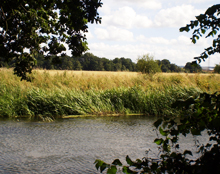
Looking across river to Broadmead |
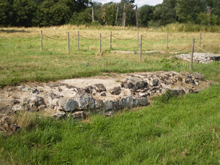
Exposed wall of Great Hall |
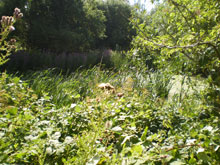
The moat - now overgrown |
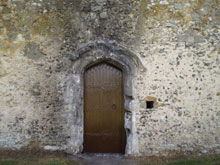
Newly-painted vault door |
